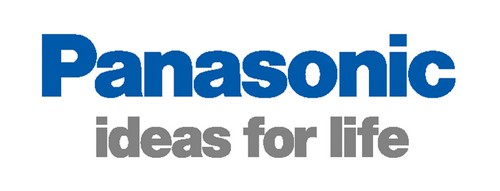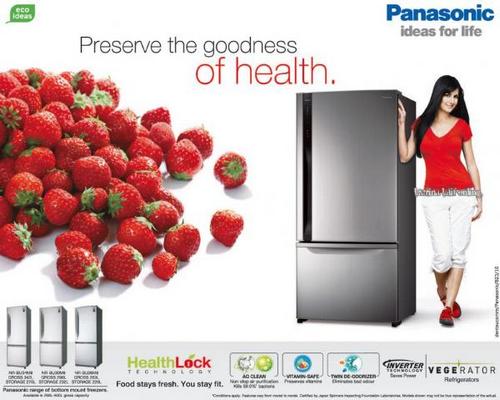The Marketing mix of Panasonic analyses the 4Ps of Panasonic, including the Product, Price, Place, and Promotions. Panasonic is a public limited company headquartered in Kadoma, Japan. Founded in 1918, this multinational Japanese corporation deals in the electronics and home appliances industry. Panasonic serves the international market and is one of the leading electronic goods producers in the world. It has created a global brand and name by associating itself with the “Go Green” movement. Some of the central business rivals of this worldwide brand are as follows-
- Canon Inc
- Toshiba
- Hitachi
- Sony
About Panasonic
- Type: Multinational electronics corporation
- Industry: Conglomerate
- Founded: March 13, 1918
- Founder: Konosuke Matsushita
- Headquarters: Osaka, Japan
- Area served: Worldwide
- Key people:Kazuhiro Tsuga (Chairman) and Yuki Kusumi (CEO)
- Number of employees: 236,000
Table of Contents
Panasonic Product Strategy
Panasonic started its journey by manufacturing bicycle lamps marketed under the National brand. Later, it started the production of electrical appliances and components like electric irons and light fixtures. After World War II, Panasonic began dealing with radio, appliances, and bicycles. In 1961, the company started producing television sets, and it is the world’s fourth-largest television manufacturer.
Currently, the company sells almost all its services and products under the Panasonic brand name. Panasonic has a variety of services eco solutions companies and products in its portfolio that relate to home appliances, semiconductors, and electronic goods. It has also stepped into the product category of non-electronic goods and various services like home renovation services.
Panasonic offers a diverse range of products and solutions in various industries.
The new Product Mix of Panasonic in 2023 is as follows (Source).
- Consumer Electronics: Panasonic is renowned for its consumer electronics, including televisions, audio systems, cameras, and home appliances like refrigerators, washing machines, and air conditioners.
- Automotive and Industrial Systems: They provide automotive infotainment systems, rechargeable batteries, and electronic components used in various industries.
- Eco Solutions: This segment involves products related to energy-saving and sustainable solutions, like solar panels, lighting fixtures, and ventilation systems.
- Connected Solutions: Offering products and services for the business sector, such as aviation technology, security systems, and IT solutions.
- Healthcare: Panasonic delves into healthcare products, including medical imaging devices and IT solutions.
- Home Renovation: They provide housing construction and renovation services, focusing on eco-friendly and energy-efficient designs.
- Beauty and Personal Care: This includes grooming products like shavers, trimmers, beauty products, and hair dryers.
- Avionics: They manufacture avionics systems, in-flight entertainment, and communications systems for the aerospace industry.
Panasonic Place Strategy
Panasonic started its journey in Osaka, Japan. Still, later, during World War II, it started operating various factories in its country, Japan, and numerous other Asian countries. In 1961, the brand started the production of televisions for the US market, and later, the company expanded to Europe. Panasonic has over five hundred and eighty subsidiary companies, with operations in many parts of the globe.
The brand started its operations in India in 1972. The founder revamped the company’s sales procedure and distribution organization. In 1965, he set up a sales network after restructuring the company’s sales policies. He initiated a direct division for transactions bypassing the offices of the sales offices and created a new credit system for sales. The manufacturing units had autonomous management powers, and the provision stores were extended. He also started a five-day week program that led to fresh ideas, management, and improvement in the overall performance as it helped in the smooth running of the company and laid the base for all its future policies.
The company’s operations are organized with the help of its “Domain Companies,” nine in number, like Eco Solutions, AVC Networks, Energy, Automotive Systems, and Appliances. The Panasonic Automotive Systems deal in the manufacturing of audio equipment. It acts as a subcontractor by supplying various auto manufacturers. Panasonic Corporation in Europe operates through a chain of outlets in Ireland and the United Kingdom. These Panasonic Stores sell the entire range of products exclusively belonging to the brand.
The company also established a new company called Panasonic Electrical Works in Serbia to manufacture electronic devices. Panasonic Products are currently available in its outlets, shopping malls, and other outlets with which the company has tie-ups. Purchase is also possible through online shopping sites, which have become a significant selling outlet for the brand.
Here’s the place strategy of Panasonic.
- Global Distribution Network: Panasonic employs a vast global distribution network, encompassing a wide range of retail channels, including online platforms, specialty stores, and large electronics retailers, ensuring their products are accessible worldwide.
- Localized Manufacturing: To cater to regional market needs and reduce logistics costs, Panasonic establishes manufacturing plants in key markets, such as North America, Asia, and Europe, allowing for more efficient supply chain management and customization of products for local demands.
- Partnerships and Alliances: Panasonic often engages in strategic partnerships and alliances with local companies, retailers, and distributors, which enhances their market penetration and improves the adaptability of their products and services to meet specific regional needs.
- After-Sales Service Centers: Emphasizing customer satisfaction, Panasonic has set up numerous service centers across different regions to provide efficient after-sales services, contributing to a positive brand image and customer loyalty.
- Adaptation to Local Market Trends: Panasonic adapts its product offerings and marketing strategies to align with local tastes, preferences, and regulatory requirements, demonstrating a flexible approach to meet diverse consumer needs in different locations.
Panasonic Pricing Strategy
Panasonic is an international brand that believes in qualitative products to cater to the global target audience. Its pricing policies have always been straightforward. The company produced its goods for the average household, keeping its prices reasonable. The company makes sure that the products are available to every section of society because of its affordable pricing policies. Thus, the brand has gone for a fair Price Policy where the prices are appropriate rather than immovable. The company has tried various cost-cutting strategies to penetrate as much of the market as possible,
The brand has kept a minimum profit margin, encouraging higher sales figures and maximum revenues for the company. Discounts on special occasions have also helped lower product prices and increase revenues while creating a new consumer base.
Panasonic’s pricing and marketing strategy is a sophisticated blend of market-oriented and value-based approaches, carefully crafted to enhance its brand value while ensuring competitiveness in the global marketplace. Here’s an in-depth look at their pricing strategy:
- Value-Based Pricing: At the core, Panasonic employs value-based pricing, focusing on the perceived value of its products to the customer rather than solely on production costs. This approach allows them to set prices that reflect their products’ quality, innovation, and technological advancements, catering to a market segment that appreciates and is willing to pay for higher quality and advanced features.
- Competitive Pricing: Panasonic adopts pricing strategies in highly competitive segments like consumer electronics. They closely monitor the pricing models of their competitors, ensuring their products are attractively priced to capture a significant market share without compromising on quality.
- Product Line Pricing: Panasonic utilizes product line pricing to encourage customers to upgrade to premium models. They strategically price their products within a line to differentiate between entry-level, mid-range, and high-end models, motivating customers to consider higher-priced options for better features or quality.
- Dynamic Pricing: In response to market trends, inventory levels, and consumer demand, Panasonic often employs dynamic pricing, particularly in its consumer electronics segment. This pricing flexibility helps them stay competitive during seasonal sales and new product launches in response to changing market dynamics.
- Psychological Pricing: Panasonic sometimes uses psychological pricing strategies, like pricing products just below a round number (e.g., $499 instead of $500) to make the price appear significantly lower. This tactic is particularly effective in influencing consumer perception and boosting sales.
- Skimming Strategy for New Products: Panasonic occasionally adopts a price skimming strategy for innovative and high-tech products. They initially set higher prices for new and advanced products, targeting early adopters willing to pay a premium. Over time, as the product matures, they gradually reduce the price to appeal to a broader customer base.
- Geographical Pricing: Understanding diverse economic conditions across regions, Panasonic practices geographical pricing. Prices are adjusted based on local market conditions, purchasing power, and competitive scenarios, ensuring optimal pricing in different international markets.
Panasonic Promotion Strategy
Panasonic believes in large-scale campaigns promoting its brand and various services and products. It has stepped up its advertising promos to increase the brand’s visibility in consumers’ eyes. The brand has appointed famous Brazilian footballer “Neymar Jr” as its ambassador. The company has participated in the “Greener Electronics” movement dedicated to manufacturing eco-friendly products. Its brand slogan is “A Better Life, A Better World“.
Panasonic has decided on numerous sponsorship deals to maintain its brand identity and visibility in the international market. The brand has sponsored “Marco Reus,” the German footballer who plays for “Borussia Dortmund club.” The company also owns a “J.League,” a Japanese football club called “Gamba Osaka.” Panasonic is the sponsor and official partner of “Major League Soccer” and “AFC Champions League”. The brand also acted from 1981 to 1983 as the shirt sponsoring company for “Nottingham Forest F.C,” an English football club. In January 2010, Panasonic signed a three-year deal as a jersey sponsor for the “Indian National Team of Football.”
The company also sponsors “Toyota’s Formula One”. In 2007, the brand cracked a deal with “Hendrick Motorsports” and became its technology partner. It has also agreed to sponsor the no24 car and “Jeff Gordo” for two of its races in 2014 and 2016. Since the year 1988 “Seoul Olympics,” the brand has acted as one of the sponsors for the “Olympic Games.” Besides sports, Panasonic has also encouraged professional filmmakers by lending them the use of cameras for their various projects. “Marianne,” the Swedish horror film, was shot with “Panasonic Lumix DMC-GH1″ camera.
Some Recent Video ads and Print ads for Panasonic are:
Liked this post? Check out the complete series on Marketing Mix

